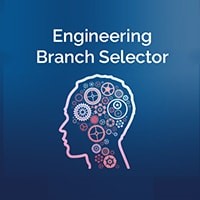GIT full form in medical Gastrointestinal Tract : It is a wonder of organic engineering, orchestrating the complicated manner of digestion and nutrient absorption important for sustaining existence. Comprising a series of organs and systems, the GIT courses food from ingestion to removal, seamlessly navigating through numerous physiological tiers.
At the forefront of the GIT lies the mouth, wherein the journey commences with the mechanical breakdown of meals thru chewing and the enzymatic movement of saliva. Subsequently, the food bolus traverses the esophagus, propelled by rhythmic muscle contractions called peristalsis, to reach the belly.
Within the stomach, gastric juices and enzymes mingle with the meals, starting up chemical digestion at the same time as also facilitating sterilization via acidic situations. From there, the in part digested food actions into the small gut, in which the bulk of nutrient absorption happens.
- Introduction : GIT full form in medical
- Anatomy of the GIT: GIT full form in medical
- 8 important parts of GIT : GIT full form in medical
- Functions : GIT full form in medical
- Treatment: GIT full form in medical
- Common Gastrointestinal Disease: GIT full form in medical
- Mechanical and Chemical Processes: GIT full form in medical
- Role of Enzymes: GIT full form in medical
- Secretions in the GIT: GIT full form in medical
- Gastrointestinal Disorders
- Advances in Gastrointestinal
- FAQ’s
Introduction : GIT full form in medical
The Gastrointestinal Tract (GIT) stands as a excellent testomony to the intricacies of human biology, serving because the linchpin of the digestive gadget. It contains a labyrinthine network of organs and structures that together orchestrate the complicated methods of digestion, absorption, and waste elimination essential for sustaining lifestyles.
At its core, the GIT functions as a dynamic conveyor belt, guiding meals from entry to go out even as executing a series of meticulously coordinated actions along the way. The adventure starts offevolved in the mouth, in which the mechanical breakdown of meals initiates thru chewing and the chemical movement of saliva’s enzymes.
This bolus of chewed food then embarks on its voyage down the esophagus, propelled by means of rhythmic contractions of muscle fibers known as peristalsis, to reach the belly.
Within the stomach’s acidic milieu, a symphony of gastric juices and enzymes commences the procedure of chemical digestion, breaking down meals debris into absorbable vitamins. From there, the in part digested chyme makes its manner into the small intestine
Anatomy of the GIT: GIT full form in medical
Structures and Organs: The GIT includes a series of organs and systems that paintings collectively to facilitate the digestion and absorption of vitamins. Major components include the mouth, esophagus, stomach, small gut, big intestine (colon), rectum, and anus.
Mouth: The preliminary web site of digestion in which meals is ingested and routinely broken down via chewing. Saliva, containing enzymes like amylase, starts the chemical breakdown of carbohydrates.
Esophagus: A muscular tube that transports chewed food (bolus) from the mouth to the stomach thru peristalsis, rhythmic contractions of clean muscle tissue.
Stomach: A muscular organ that receives and shops food. Gastric glands secrete gastric juices containing hydrochloric acid and enzymes like pepsin, starting up the breakdown of proteins.
Small Intestine: Comprising the duodenum, jejunum, and ileum, the small gut is wherein maximum digestion and absorption occur. Enzymes from the pancreas and bile from the liver aid in breaking down nutrients into absorbable paperwork.
Large Intestine (Colon): Responsible for water absorption and the formation of feces. The colon consists of the ascending, transverse, descending, and sigmoid colon, culminating inside the rectum.
8 important parts of GIT : GIT full form in medical
Mouth: The entry point wherein meals is ingested. The teeth, tongue, and salivary glands start the procedure of digestion with the aid of breaking down food robotically and chemically.
Esophagus: A muscular tube that connects the mouth to the stomach. It transports swallowed food and beverages to the stomach through coordinated muscle contractions called peristalsis.
Stomach: A sac-like organ wherein food is mixed with digestive juices, consisting of stomach acid and enzymes. The stomach facilitates smash down food into a semi-liquid shape known as chyme.
Small Intestine: A long, coiled tube where maximum of the digestion and absorption of vitamins arise. It consists of 3 components: the duodenum, jejunum, and ileum.
Duodenum: The first a part of the small intestine, in which a big portion of chemical digestion occurs. It receives bile from the liver and pancreatic juice from the pancreas to assist digest fat, proteins, and carbohydrates.
Jejunum and Ileum: The center and final elements of the small gut, in which the majority of nutrient absorption into the bloodstream takes vicinity.
Large Intestine (Colon): This component absorbs water and electrolytes from indigestible food count number, forming solid waste (feces). It includes the cecum, colon, rectum, and anus.
Rectum and Anus: The rectum stores feces until they’re geared up to be expelled via the anus, which is the final part of the GIT, liable for the removal of waste from the body.
Functions : GIT full form in medical
Ingestion: The GIT begins the technique of digestion through taking in meals and beverages thru the mouth. This includes chewing and combining food with saliva, which contains enzymes that start breaking down carbohydrates.
Propulsion: After ingestion, the GIT propels meals thru the digestive machine thru coordinated muscular contractions known as peristalsis. This movement facilitates delivery meals from the mouth to the belly and via the intestines.
Mechanical Digestion: Mechanical digestion entails the bodily breakdown of meals into smaller debris. In the mouth, that is performed thru chewing, at the same time as within the belly, it is carried out via churning and combining of food with gastric juices.
Chemical Digestion: Chemical digestion involves the enzymatic breakdown of meals into smaller, absorbable molecules. This method occurs typically within the stomach and small gut, in which various digestive enzymes and acids act on proteins, fats, and carbohydrates.
Absorption: The small gut is frequently responsible for soaking up vitamins from digested meals into the bloodstream. The inner lining of the small intestine, prepared with villi and microvilli, increases floor vicinity to maximize nutrient absorption.
Secretion: The GIT secretes diverse digestive enzymes, acids, and bile to aid in digestion. For instance, the belly secretes hydrochloric acid and pepsin, at the same time as the pancreas secretes digestive enzymes and the liver produces bile to emulsify fats.
Excretion: The final function of the GIT is to take away waste merchandise from the body. The big intestine absorbs water and electrolytes from indigestible meals residues, forming feces which might be ultimately expelled from the body thru the rectum and anus.
Treatment: GIT full form in medical
| Condition | Treatment Options | Notes |
|---|---|---|
| Condition A | – Medication A – Therapy B – Surgery C | – Monitor side effects – Follow-up required |
| Condition B | – Medication D – Lifestyle changes – Physical therapy E | – Lifestyle changes critical for effectiveness |
| Condition C | – Surgery F – Medication G – Rehabilitation H | – Post-surgery care important – Rehabilitation schedule |
| Condition D | – Medication I – Counseling J – Support groups K | – Consider patient’s mental health – Regular counseling sessions |
| Condition E | – Medication L – Dietary changes – Exercise plan M | – Monitor dietary compliance – Exercise intensity adjustments |
| Condition F | – Medication N – Alternative therapies O – Regular monitoring | – Evaluate alternative therapies effectiveness – Regular follow-up appointments |
| Condition G | – Surgery P – Post-operative care – Pain management | – Post-operative infection prevention – Pain management strategies |
Common Gastrointestinal Disease: GIT full form in medical
| Disease | Symptoms | Treatment Options |
|---|---|---|
| Gastroesophageal Reflux Disease (GERD) | – Heartburn – Regurgitation – Chest pain – Difficulty swallowing | – Antacids – Proton pump inhibitors (PPIs) – H2 receptor antagonists – Lifestyle modifications |
| Peptic Ulcer Disease | – Abdominal pain – Nausea – Vomiting – Loss of appetite | – Antibiotics (for H. pylori infection) – PPIs – H2 receptor antagonists – Avoidance of irritants (e.g., NSAIDs, alcohol) |
| Irritable Bowel Syndrome (IBS) | – Abdominal pain – Bloating – Diarrhea or constipation (or both) – Mucus in stool | – Dietary changes (e.g., low FODMAP diet) – Fiber supplements – Antispasmodics – Laxatives or antidiarrheals |
| Inflammatory Bowel Disease (IBD) | – Abdominal pain – Diarrhea (often with blood) – Weight loss – Fatigue | – Anti-inflammatory drugs (e.g., aminosalicylates) – Immunosuppressants – Biologic therapies – Surgery (for severe cases) |
| Celiac Disease | – Diarrhea – Abdominal pain – Weight loss – Fatigue | – Strict gluten-free diet – Nutritional supplements (if deficiencies are present) |
| Diverticulitis | – Abdominal pain (usually lower left side) – Fever – Nausea – Constipation or diarrhea | – Antibiotics – Pain relief – High-fiber diet (post-recovery) – Surgery (in severe cases) |
| Gallstones (Cholelithiasis) | – Abdominal pain (often in the upper right quadrant) – Nausea – Vomiting – Fever (if inflammation occurs) | – Pain management – Dietary changes – Surgery (cholecystectomy) |
| Pancreatitis | – Severe abdominal pain – Nausea – Vomiting – Fever – Rapid pulse | – Hospitalization (for severe cases) – Pain management – Nutritional support – Treat underlying cause (e.g., gallstones, alcohol use) |
Mechanical and Chemical Processes: GIT full form in medical
Mechanical Processes:
- Mastication: The manner of chewing meals inside the mouth, breaking it down into smaller debris to increase its floor place and facilitate swallowing.
- Peristalsis: Rhythmic contractions of easy muscle tissues that propel meals alongside the digestive tract, helping in its motion from the mouth to the anus.
- Segmentation: Contractions of the intestinal walls that mix food with digestive juices and facilitate absorption by using growing contact with the intestinal lining.
Chemical Processes:
- Enzymatic Digestion: Enzymes wreck down complex molecules into simpler paperwork that may be absorbed. For example:
- Amylase: Breaks down carbohydrates into simple sugars (e.G., glucose).
- Proteases: Break down proteins into amino acids.
- Lipases: Break down fats into fatty acids and glycerol.
Acidic Environment: Hydrochloric acid inside the stomach creates an acidic surroundings that turns on enzymes like pepsin, which aids in protein digestion.
Bile: Produced via the liver and stored within the gallbladder, bile emulsifies fats, assisting of their digestion and absorption.
Pancreatic Juices: Secreted by way of the pancreas into the small gut, these juices comprise enzymes that further spoil down carbohydrates, proteins, and fats.
Absorption: Following digestion, nutrients are absorbed throughout the intestinal lining into the bloodstream or lymphatic machine for distribution throughout the body.
Role of Enzymes: GIT full form in medical
| Enzyme | Source | Substrate | Product(s) | Function |
|---|---|---|---|---|
| Amylase | Salivary glands, Pancreas | Starch (carbohydrates) | Maltose, Maltotriose, Glucose | Breaks down complex carbohydrates into simpler sugars for absorption |
| Pepsin | Stomach (chief cells) | Proteins | Peptides | Initiates the breakdown of proteins into smaller peptide fragments in the stomach |
| Trypsin | Pancreas | Proteins | Peptides | Further breaks down protein peptides into smaller peptides |
| Chymotrypsin | Pancreas | Proteins | Peptides | Works in conjunction with trypsin to break down protein peptides |
| Lipase | Pancreas | Lipids (fats) | Fatty acids, Glycerol | Hydrolyzes fats into fatty acids and glycerol for absorption |
| Pancreatic amylase | Pancreas | Starch (carbohydrates) | Maltose, Maltotriose, Glucose | Assists in the breakdown of complex carbohydrates into simpler sugars |
| Peptidases | Intestinal mucosa (Brush border) | Peptides | Amino acids, Dipeptides, Tripeptides | Complete the breakdown of peptides into amino acids for absorption |
| Maltase | Intestinal mucosa (Brush border) | Maltose (carbohydrates) | Glucose | Breaks down maltose into glucose for absorption |
| Lactase | Intestinal mucosa (Brush border) | Lactose (carbohydrates) | Glucose, Galactose | Breaks down lactose into glucose and galactose for absorption |
| Sucrase | Intestinal mucosa (Brush border) | Sucrose (carbohydrates) | Glucose, Fructose | Breaks down sucrose into glucose and fructose for absorption |
Secretions in the GIT: GIT full form in medical
Saliva:
- Produced by using salivary glands within the mouth.
- Contains water, mucus, electrolytes, and enzymes which include amylase and lipase.
- Functions consist of moistening food, initiating carbohydrate digestion, and facilitating swallowing.
Gastric Juices:
- Secreted by means of gastric glands inside the belly.
- Main additives consist of hydrochloric acid (HCl) and pepsinogen.
- HCl creates an acidic surroundings important for pepsinogen to transform into pepsin, which aids in protein digestion.
- Gastric juices also comprise mucus, which protects the belly lining from the acidic surroundings.
Pancreatic Secretions:
- Produced through the pancreas and released into the small gut.
- Contains bicarbonate ions to neutralize stomach acid and create an top-quality pH for enzyme hobby.
- Enzymes consist of pancreatic amylase (for carbohydrate digestion), lipase (for fats digestion), and diverse proteases (for protein digestion).
Bile:
- Produced by way of the liver and saved inside the gallbladder.
- Released into the small intestine to aid in fats digestion and absorption.
- Bile emulsifies fat, breaking it down into smaller droplets to growth the floor location for enzymatic movement.
Intestinal Secretions:
- Produced via glands in the intestinal lining.
Includes mucus, electrolytes, and enzymes inclusive of peptidases, sucrase, maltase, and lactase. - Functions encompass lubricating the intestinal lining, neutralizing acidic chyme, and completing digestion of carbohydrates, proteins, and fats.
Hormones: - Produced with the aid of specialised cells inside the GIT.
- Hormones which include gastrin, secretin, and cholecystokinin adjust digestive methods, which includes gastric acid secretion, pancreatic enzyme release, and bile secretion.
Gastrointestinal Disorders
| Disorder | Description | Symptoms | Causes | Treatment |
|---|---|---|---|---|
| Gastritis | Inflammation of the stomach lining. | Abdominal pain, nausea, vomiting, bloating. | Helicobacter pylori infection, NSAIDs, alcohol consumption, stress. | Antacids, proton pump inhibitors, antibiotics (if caused by H. pylori), dietary modifications. |
| Peptic Ulcer Disease | Open sores in the lining of the stomach or upper part of the small intestine. | Burning pain in the abdomen, bloating, nausea, vomiting, weight loss. | H. pylori infection, NSAIDs, excessive acid production. | Antibiotics (if caused by H. pylori), proton pump inhibitors, H2-receptor antagonists, antacids. |
| Gastroesophageal Reflux Disease (GERD) | Chronic condition where stomach acid flows back into the esophagus, causing irritation. | Heartburn, regurgitation, chest pain, difficulty swallowing, coughing. | Weakness of the lower esophageal sphincter, hiatal hernia, obesity, pregnancy. | Lifestyle changes (e.g., diet, weight loss), proton pump inhibitors, H2-receptor antagonists, antacids. |
| Irritable Bowel Syndrome (IBS) | Functional disorder of the intestines characterized by abdominal pain and changes in bowel habits. | Abdominal pain, bloating, diarrhea, constipation, alternating diarrhea and constipation. | Exact cause unknown, may involve abnormalities in gut motility, sensitivity, and/or brain-gut communication. | Dietary modifications, stress management, fiber supplements, antispasmodic medications, probiotics. |
| Inflammatory Bowel Disease (IBD) | Chronic inflammatory conditions of the digestive tract, including Crohn’s disease and ulcerative colitis. | Abdominal pain, diarrhea, rectal bleeding, weight loss, fatigue. | Autoimmune factors, genetic predisposition, environmental triggers. | Anti-inflammatory medications (e.g., corticosteroids, immunosuppressants), biologic therapies, dietary modifications, surgery (in severe cases). |
| Celiac Disease | Autoimmune disorder triggered by gluten consumption, leading to damage to the small intestine. | Abdominal pain, diarrhea, bloating, fatigue, weight loss, nutrient deficiencies. | Genetic predisposition, gluten consumption. | Strict gluten-free diet, nutritional supplements (if deficiencies present), corticosteroids (in severe cases). |
| Diverticulitis | Inflammation or infection of pouches (diverticula) in the colon. | Abdominal pain (often on the lower left side), fever, nausea, vomiting, changes in bowel habits. | Aging, low-fiber diet, obesity, lack of exercise. | Antibiotics (for mild cases), dietary modifications (e.g., high-fiber diet), pain relief medications, surgery (in severe cases). |
Advances in Gastrointestinal
Endoscopic Techniques:
Development of advanced endoscopic strategies together with endoscopic mucosal resection (EMR) and endoscopic submucosal dissection (ESD) for minimally invasive elimination of precancerous lesions and early-level GI cancers.
Diagnostic Imaging:
Advancements in diagnostic imaging modalities consisting of computed tomography (CT), magnetic resonance imaging (MRI), and positron emission tomography (PET) for stepped forward detection and staging of GI sicknesses.
Therapeutic Innovations:
Introduction of novel pharmacological dealers and biologic treatment options for the treatment of inflammatory bowel diseases (IBD) and other chronic GI conditions, presenting focused cures with improved efficacy and safety profiles.
Microbiota Research:
Advancements in information the function of the intestine microbiota in GI health and disorder, leading to the improvement of microbiome-targeted remedies consisting of fecal microbiota transplantation (FMT) for the remedy of recurrent
FAQ's
Q1:What is the GIT?
A: The GIT, or Gastrointestinal Tract, is a system of organs responsible for the digestion and absorption of food.
Q2: What organs are part of the GIT?
A: The GIT includes the mouth, esophagus, stomach, small intestine, large intestine, rectum, and anus.
Q3:What is the role of the GIT?
A: The GIT processes food, breaking it down into nutrients that can be absorbed by the body while also eliminating waste products.
Q4: How does digestion occur in the GIT?
A: Digestion involves both mechanical processes (e.g., chewing, peristalsis) and chemical processes (e.g., enzymatic breakdown of food).
Q5:What are common GIT disorders?
A: Common disorders include gastritis, peptic ulcers, gastroesophageal reflux disease (GERD), irritable bowel syndrome (IBS), and inflammatory bowel disease (IBD).



















